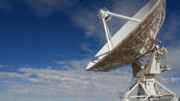Of course you want the best sound, right? With DIRECTV receivers you generally have a lot of choice on how to get the sound out. You can pass it through the HDMI cable, or you can go out through the optical or coaxial digital out ports. HD receivers and DVRs let you use the pure Dolby Digital 5.1 signal embedded by the content providers in much of their programming.
But, what all you have is the bare-bones D12 standard definition receiver? Does that mean you’re locked out of the golden world of Dolby encoding? Are you cursed to listen to all of your programs as if they were being played on a 25-year-old cassette deck? Luckily, not.
There’s no question that Dolby Digital is the top of the heap for audio over satellite. Blu-ray discs may feature even better sound, but for most people Dolby Digital gives you sound that’s indistinguishable from the real thing, and includes surround information so that the explosions pop and music booms where it should. There’s another level of Dolby though, a lower level of Dolby that is not as good but still clean and believe it or not, still has surround.
Best of all it’s included on every DIRECTV receiver, even the D12.
It’s called Dolby Pro Logic, and it was the cream of the crop back in the 1990s before digital audio was standard for television. Most content providers still put it in their analog feeds, the feeds that are used by cable and satellite companies for their low-end SD receivers. And that means you have it too. Just connect the audio out, the red and white jacks on the back of the receiver, into the audio in of an A/V receiver with Dolby decoding built in (and almost all of them have it.) Set that A/V receiver to Dolby Pro Logic, Pro Logic II or Pro Logic IIx and you’re in business. Instant surround sound and theater-quality audio!
Of course, it won’t be the full digital experience but hey, it’s something!




